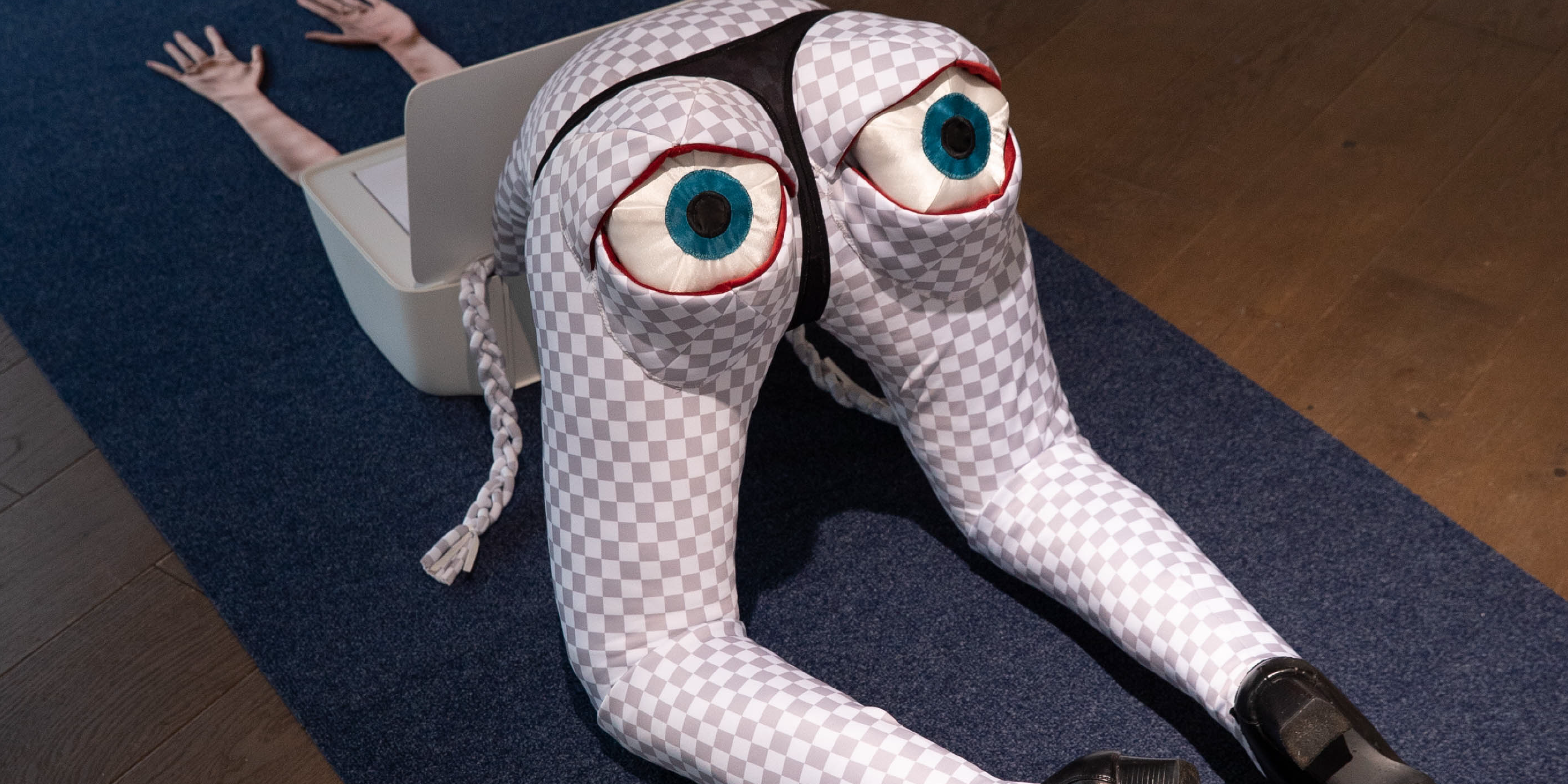“I was thinking about the strange trend of office workers photocopying their bums and other body parts. This feels like a rebellious attempt to insert agency and possibly sexuality into the corporate routine.”
Mission’s long-standing collaboration with Sarabande, a London-based charitable organization established by the late Lee Alexander McQueen to support creative talent, is back.
Mission will be interviewing the charity’s “artists in residence,” a select few talented creatives who the charity provides with studio space and resources, enabling them to develop and hone their work in an increasingly hostile socio-economic landscape for artists.
Kicking off the series is Rosie Gibbens, a multimedia artist who experiments with performance art, sculpting, and NFTs to unpack gender norms, consumption under capitalism, and sexuality.
In the interview below, which has been edited for length and clarity, Gibbens opens up about finding absurdity in the every day, unpacking the ‘sex sells’ mindset, and how Instagram places artists ‘at the whim of an algorithm.’
Juno Kelly: You describe yourself as an “unearthly anthropologist.” What do you mean by that, and why is it an effective viewpoint?
Rosie Gibbens: It helps me find absurdity within the everyday. I try to observe the world as though I’m not used to societal conventions and therefore draw illogical conclusions. I purposely misunderstand things to skew their meaning.
JK: You identify as an alien, witnessing how humans perform. Is there a reason you’re drawn to this sense of removal — has a sense of identity been something you’ve struggled with or were attracted to exploring for other reasons?
RG: The alien mindset methodology helps me make decisions about the work. However, it’s still a very personal exploration. I have no illusions about being objective or detached. My identity, particularly in relation to gender performativity and sexuality, is fundamental. As a woman, citizen, and consumer, I’m interested in unpacking the assumptions and contractions I’ve internalized about how I ‘should’ look, behave, or desire.
JK: Your work at the Sarabande Summer exhibit revolves around digital skins. What attracted you to this topic?
RG: It was inspired by 3D digital photogrammetry scans of my body, made up of a 3D textured figure and then a 2D ‘net’ made from comped photos that stretches over the digital body. My imagination was caught by the way the net acted like a ‘skin’ for the digital version of me. The sculpture Planned Obsolescence references the 2D skin and 3D innards, with a 2D printer dividing them as an absurd stand-in for 3D printing technology.
Cheap home-use printers are notoriously frustrating and breakable, so, for me, they represent aspirational technology’s failures. Planned obsolescence is a business strategy that ensures products are designed to fail after a certain period, forcing the consumer to spend more. I’m interested in corporations’ nefarious intentions and how this will affect a time when technology and bodies become increasingly intertwined.
I was also thinking about the strange trend of office workers photocopying their bums and other body parts. This feels like a rebellious attempt to insert agency and possibly sexuality into the corporate routine. It’s also a satisfying way of blending objects and humans—with the workers perhaps momentarily becoming a low-tech cyborgs.
JK: You created a collection of NFTs entitled ‘The New Me.’ What made you adapt your work for the metaverse?
RG: The New Me considers how products are advertised for self-improvement and parodies the endless production line of new devices made to ‘optimize’ our lives. I’ve invented three ‘pointless’ products sold by my fictional, retro-futuristic, dystopian company: the ‘Ilium Corporation,’ a two-person toothbrushing mask designed to improve intimacy, a cleaning outfit that gives the impression of a muscular physique, and a relaxation/ exercise machine that makes you feel like a cat. They require a level of multi-tasking that is overwhelming.
These ‘products’ can only be bought in NFT format, an absurd way to purchase items with real-world uses. I’m interested in how buying products in online spaces could exaggerate (and, for me, ridicule) the status aspect of our desire for commodities.
JK: What made you dedicate the series to critiquing consumerism?
RG: Much of my work explores how the desire for bodies and commodities overlaps. I’m interested in the ‘sex sells’ mindset and how it affects identity construction. There is a cognitive bias—we know brands manipulate us to desire products, yet we still want them.
JK: What inspired your micro-performance series on Instagram reels?
I made those during lockdown when I was cut off from opportunities and felt disconnected from other artists. I challenged myself to create short works using the items I had at home. They convey frustration and boredom with the monotonous domestic routines that became vital when I was stuck indoors.
JK: What are the pros and cons of social media as a means of showcasing art?
RG: It’s an accessible way for people to engage with your work and means people who wouldn’t go to an art gallery can see it. It can be fun because the stakes are lower than putting on an exhibition. However, you’re not exactly receiving constructive feedback on Instagram, and you’re at the whim of an algorithm that doesn’t care about you. I feel conflicted about the fact that you’re commodifying your body on these platforms. As someone who engages with this topic, it makes me feel weird.
JK: Do you hope those who engage with your art are left with a specific feeling?
RG: I hope that viewers feel unsettled in some way.
Homepage image captured by Greg Goodale, 2019 Inside images captured by Rosie Gibbons Mid-text image captured by Rosie Gibbons





